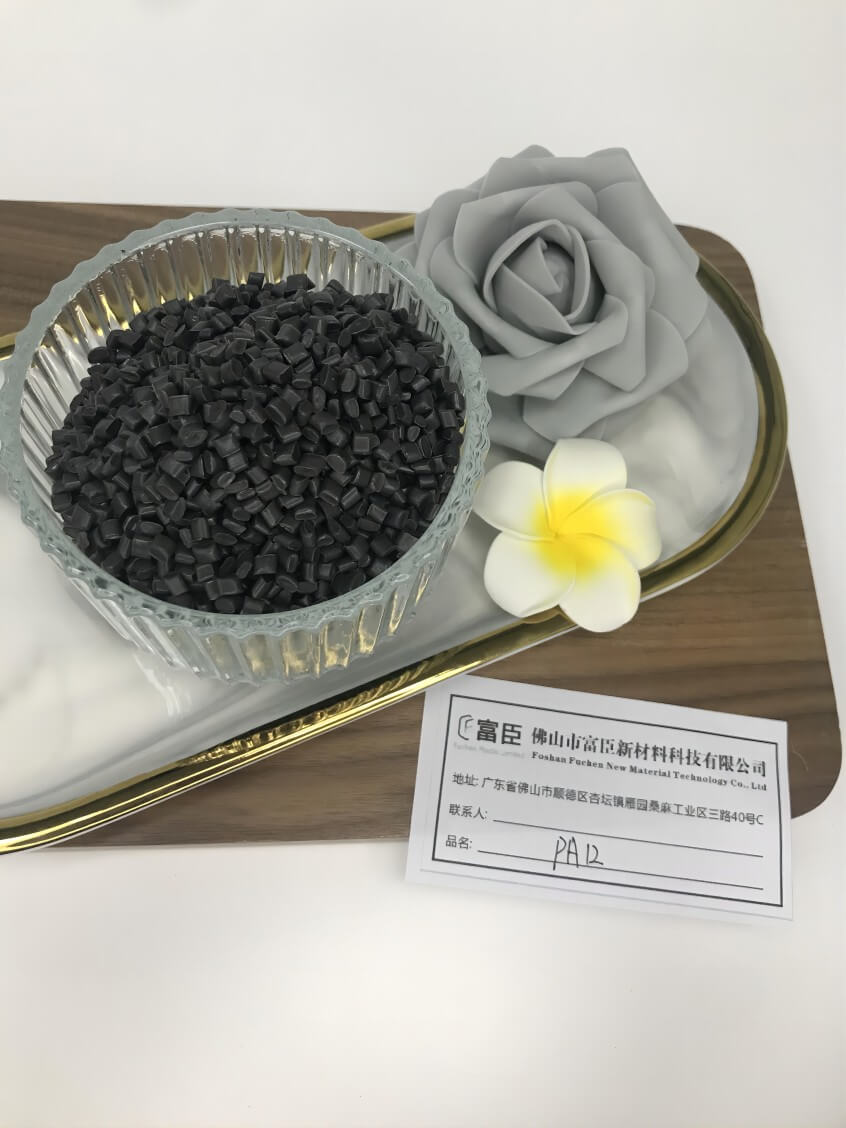Table of Contents
ToggleIntroduction of Nylon PA12
Nylon PA12, also known as polyamide 12, is a high-performance polymer renowned for its exceptional strength and durability. Widely used across various industries, including aerospace, automotive, and medical sectors, this advanced material is favored where high-performance plastics are essential. This article delves into the strength of Nylon PA12 and explains why it stands out as a superior material.
Molecular Structure and Mechanical Properties of Nylon PA12
It is a semi-crystalline polymer with outstanding mechanical properties, such as high tensile strength, stiffness, and impact resistance. Its strength is derived from its unique molecular structure, composed of repeating amide groups (-CONH-) linked by carbon atoms. This configuration results in a high degree of crystallinity, creating a dense and tightly packed molecular structure. Additionally, this structure endows Nylon PA12 with excellent creep resistance, allowing it to maintain its shape and dimensions under sustained loads.
High Tensile Strength Of Nylon PA12
A critical attribute of PA12 is its high tensile strength, which ranges from 80 to 120 MPa, depending on the grade and manufacturing process. This is significantly higher than other commonly used polymers like polypropylene and polyethylene, which have tensile strengths of around 35 MPa and 25 MPa, respectively. The high tensile strength of PA12 makes it ideal for applications involving high loads, such as gears, bearings, and fasteners.
Superior Stiffness of Nylon PA12
PA12’s high stiffness, ranging from 8 to 12 GPa, is another factor contributing to its strength. This is much higher compared to the stiffness of polypropylene (1.5 GPa) and polyethylene (0.3 GPa). The material’s high stiffness makes it suitable for structural components and load-bearing applications, where rigidity is essential.
Exceptional Impact Resistance of Nylon PA12
In addition to its tensile strength and stiffness, PA12 also offers excellent impact resistance. This characteristic is due to its high molecular weight and significant crystallinity, which create a dense and rigid molecular structure. These properties provide the material with the ability to withstand impacts effectively, making it a reliable choice for demanding applications.
Nylon PA12 Applications in Various Industries
The outstanding strength and durability of PA12 make it a preferred material across several industries. In aerospace, it is used in engine components, landing gear, and structural parts due to its high strength-to-weight ratio and creep resistance. In the automotive industry, it is found in engine and transmission components, as well as structural parts, because of its strength, stiffness, and impact resistance. In the medical field, PA12 is used for implants, surgical instruments, and medical devices, thanks to its biocompatibility and excellent mechanical properties.
Conclusion of Nylon PA12
Nylon PA12 is a high-performance polymer that offers exceptional strength and durability. Its high tensile strength, stiffness, and impact resistance make it a top choice for various applications, especially in aerospace, automotive, and medical industries. These superior qualities are attributed to its unique molecular structure, featuring repeating amide groups linked by carbon atoms. As the demand for high-performance plastics grows, the use of PA12 is expected to increase across multiple industries.
FAQ: Nylon PA12
1. What is Nylon PA12?
A: PA12, also known as polyamide 12, is a high-performance polymer known for its exceptional strength and durability. It is widely used in various industries requiring high-performance plastics.
2. What are the key mechanical properties of Nylon PA12?
A: PA12 exhibits high tensile strength (80-120 MPa), high stiffness (8-12 GPa), and excellent impact resistance due to its unique molecular structure and high degree of crystallinity.
3. Why is Nylon PA12 considered strong?
A: PA12’s strength comes from its semi-crystalline molecular structure, which features repeating amide groups linked by carbon atoms. This results in a dense and tightly packed structure, enhancing its mechanical properties.
4. How does Nylon PA12 compare to other polymers like polypropylene and polyethylene?
A: PA12 has significantly higher tensile strength and stiffness compared to polypropylene and polyethylene. Its tensile strength ranges from 80-120 MPa, while polypropylene and polyethylene have tensile strengths of around 35 MPa and 25 MPa, respectively. PA12’s stiffness (8-12 GPa) also far exceeds that of polypropylene (1.5 GPa) and polyethylene (0.3 GPa).
5. What applications benefit from using Nylon PA12?
A: PA12 is used in aerospace (engine components, landing gear, structural components), automotive (engine and transmission components, structural parts), and medical industries (implants, surgical instruments, medical devices) due to its high strength, stiffness, impact resistance, and biocompatibility.
6. What makes PA12 suitable for high-load applications?
A: Its high tensile strength and stiffness make PA12 suitable for high-load applications such as gears, bearings, and fasteners.
7. What contributes to Nylon PA12’s impact resistance?
A: The high molecular weight and degree of crystallinity of PA12 result in a dense and tightly packed molecular structure, providing excellent impact resistance.
8. Is the demand for Nylon PA12 expected to grow?
A: Yes, as the need for high-performance plastics increases across various industries, the use of PA12 is expected to rise due to its superior mechanical properties.

